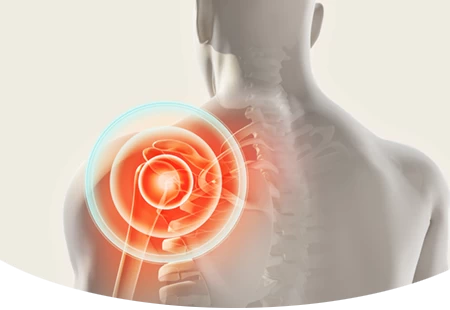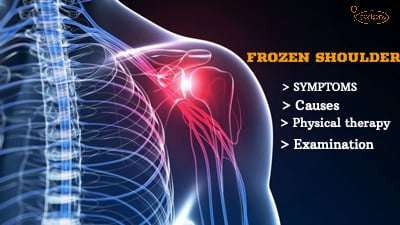
Suffering from a bulging disc is often a painful condition and can lead to further problems with your back if it is a severe issue. Anyone who has endured a back issue will attest to how invasive they can be to your daily life – whether it means struggling to carry the shopping home, reaching down to tie your shoelaces, or finding it painful to drive for long distances.
Unfortunately, bulging discs are not always immediately diagnosable. In fact, if the condition is mild, you might not even realize you have a problem if you aren’t paying attention to the symptoms. The result can be further damage and a more severe back problem.
Thankfully, bulging discs are not always a serious threat to your health and can be treated using several different trusted methods.This is what you need to know about bulging discs, the typical symptoms, and the treatments available to you:
What is a bulging disc?
Before you learn about the treatment options available to you, it is important to learn more about bulging discs in order to decide for yourself which treatment type is best for you.
A bulging disc (otherwise referred to as a herniated or slipped disc) is a relatively common condition that is mild in most instances. It is a spinal injury in which one of the discs between your vertebrae has torn or broken away.
These discs are used as a natural shock absorber, or padding, between vertebrae, which stretch right the way up your spine. It is these discs that allow you to flex your back smoothly and without any pain. When one of these discs becomes damaged, the protection they normally offer to you is minimized, causing a great deal of pain in some cases.
To understand how these discs become damaged, it is important to learn about the construction of your discs.
The construction of your discs
In layman’s terms, spinal discs have a hard outer shell and a soft inner layer. When the harder outer surface becomes weakened (such as through age), the softer inner layer can penetrate through it. This can lead to the disc touching nearby spinal nerves, causing pain or numbness in certain parts of the body.
How are bulging discs caused?
At this point, you’re probably wondering how bulging discs are usually caused and, if you are currently suffering from the condition, what you could have done differently to prevent it from happening.
Bulging discs are usually caused by being significantly overweight, smoking heavily, continually going through the same motions (such as if you regularly drive for a long period of time, sit in an office chair for hours on end, or play a particular sport), or a lack of stretching before exercising or extreme movement.
Lastly, and perhaps most frequently, herniated discs can be caused by the aging process, which is, of course, unavoidable.
How to avoid a bulging disc
When it comes to trying to avoid a bulging disc in the first place, it is best to stick to common sense advice. Always treat your back with a healthy amount of respect. If you need to lift a heavy object, then use the proper posture, while you should always stretch properly before engaging in exercise.
Furthermore, you should aim to make positive changes to your lifestyle in order to minimize your chances of suffering from a slipped disc. If you smoke, consider cutting down or quitting completely, while if you are overweight, improving your diet and engaging in regular exercises will significantly boost your chances of avoiding this condition.
Even if there are no obvious health risks present in your life, you can still improve your lifestyle to minimize your chances of a slipped disc.
You may, for example, be one of the many millions of people who live a sedentary lifestyle. Perhaps you work at a desk in an office all day, which can lead to several posture-related issues.
Be sure to get up from your desk at least once per hour and, if possible, take a walk around the block to straighten your back out and get the blood flowing around your body faster.
Alternatively, if you frequently embark on long-distance driving (such as if you have to commute a long way for work or you are a delivery driver), then you should stop frequently and stretch regularly.
You could also investigate buying specialist back posture devices, which can be positioned on your seat to prevent any postural issues.
How do you know if you are suffering from a bulging disc?
The typical symptoms of a bulging disc differ substantially, but they can include back pain, sciatic pain (which is when you feel a pain that shoots down your buttocks and legs), overall muscle weakness, and difficulty in performing a full range of movement.
Furthermore, a common symptom is a tingling feeling that you may experience in your buttocks, thigh, calves, and feet. These symptoms are usually present if you have suffered a bulging disc in your lower back.
If your disc issue is in your neck instead, you are more likely to feel the sensation in your arms and shoulders. The pain is commonly reported to be a burning or stinging feeling.
You may also suffer from muscle spasms.
Of course, it is important to point out that the severity of bulging discs ranges significantly. In some cases, you may not even notice that you are suffering from the condition, whereas in other instances, you may be in extreme pain and be unable to complete even simple physical tasks.
Therefore, if you suspect that you may have a slipped disc, be sure to seek out proper medical advice before reaching any decision.
What are the possible treatments for a bulging disc?
If you have sought medical advice and you have indeed been diagnosed with a slipped disc, then it is important to understand what your next steps might look like.
Mild cases
In mild cases, the most common treatment for a bulging disc is to heal it naturally. You may have to take pain relief medication to help with this or undergo physical therapy, but simply allowing the condition to go away can often work.
Severe cases
For those with severe symptoms, such as muscle spasms that are causing substantial pain, which is impinging on daily life, then you may want to consider different treatment options.
Just as with mild cases, the first port of call is to try and recover naturally. Rest is important for the first few days after your diagnosis, but try to keep active after that in order to keep your muscles stretched and allow them to heal faster. To help with this, you may want to talk to a doctor about pain relief medication for pain management. Alternatively, you may want help from physical therapists who can help you physically recover faster.
However, if you are suffering from a more severe slipped disc, then there is a small chance that it will damage nerves in the bowel or bladder. It could require disc injury treatment, and your two main options will be surgery and stem cell treatments:
Surgery
Surgery is the most sought option, but it brings with it several key downsides. The first is that it is an intrusive procedure, which may risk causing additional bodily damage or infection in the process. Given that slipped discs are not generally life-threatening, this is a risk worth
considering deeply. It could be argued that due to all this and the additional risks it poses that seeking another way or learning how to manage a slipped disc is the better option.
Stem cell treatment
That brings us to stem cell treatment. The strides taken in stem cell research in recent years has made it a compelling option for those with bulging discs. The reason for this is that it offers a non-intrusive procedure that uses the body’s natural healing ability to aid recovery. This means there is no chance of infection, further damage to the body due to surgery, or excessively long recovery times.
Cell-based treatments work by taking a sample of the patient’s own blood, which is spun down to concentrate the growth factors and platelets which are vital to the body’s tissue healing process.
While there are many misconceptions about cell-based treatments being complex or unproven, this couldn’t be further from the case. In fact, this treatment is growing substantially in popularity every day and is completed quickly – the whole procedure usually lasts around ninety minutes.
What happens if it is left untreated?
When bulging discs are left unexamined by a medical professional, your back health could deteriorate further and have a knock-on effect on your overall well-being. For example, if you struggle to complete a basic exercise routine due to a bulging disc issue, then you could well find yourself with several additional problems caused by a lack of physical stimulation. Therefore, you need to ascertain whether you have a bulging disc in order to cure it as quickly as possible.

